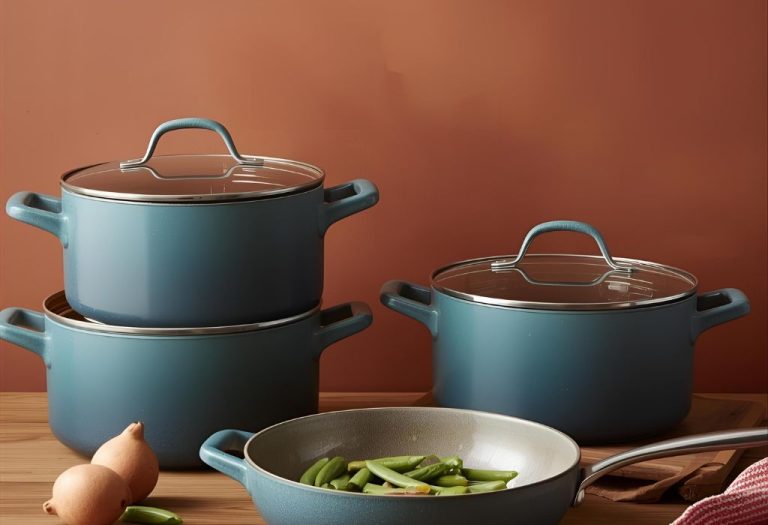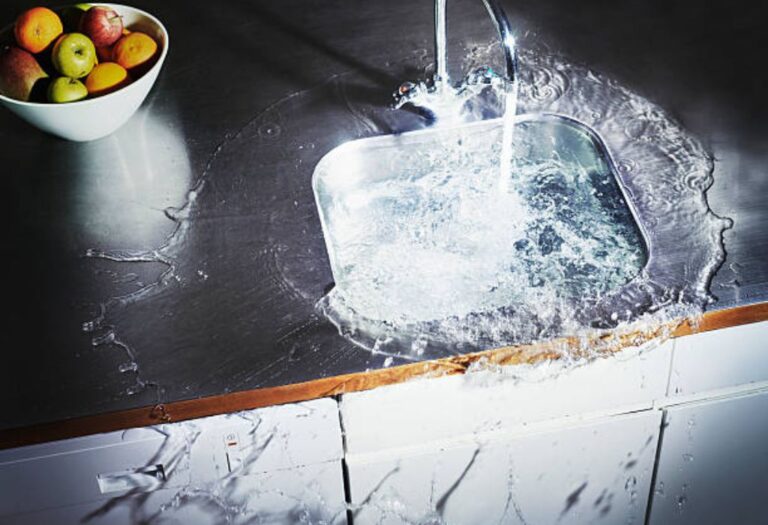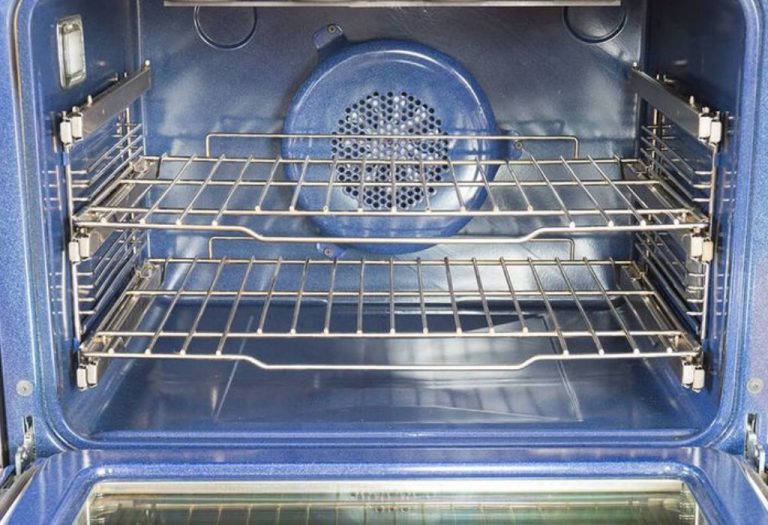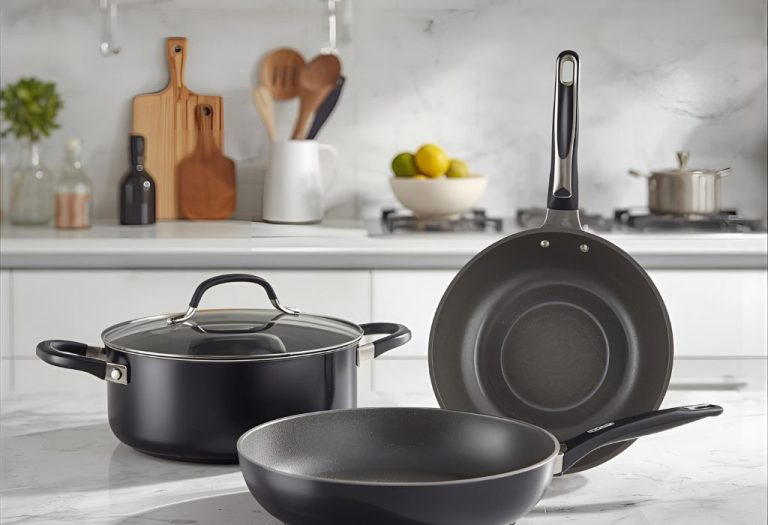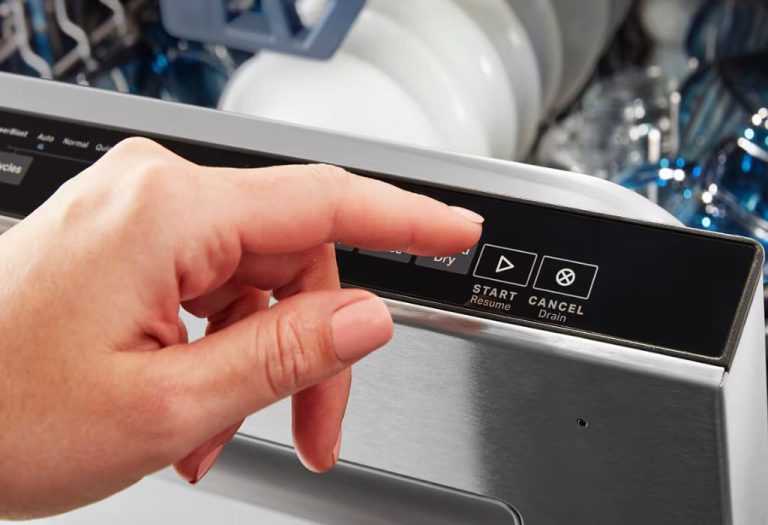You finish a long workout, toss your Owala bottle into the dishwasher, and later discover that the straw doesn’t fit right anymore or the lid gasket has stretched. It’s a frustrating moment for anyone who loves their stylish, leak-proof bottle.
Despite Owala’s reputation for durability, not every part can handle the intense heat of a dishwasher.
Owala bottles, known for their FreeSip and Flip designs, come in stainless-steel, Tritan plastic, and insulated varieties.
Each behaves differently under high-temperature washing cycles. Some components are completely dishwasher safe, while others require careful placement or handwashing.
In this detailed guide, you’ll learn exactly which Owala bottles can go in the dishwasher, what parts need gentle cleaning, and how to keep your bottle odor-free and functioning like new.
By following brand-specific care instructions and understanding material limits, you can make your Owala last for years of daily hydration.
Let’s dive into how dishwashers affect Owala bottles and the safest way to keep yours sparkling clean without damage.
Understanding Owala Bottle Materials

Owala manufactures bottles using 18/8 stainless steel, Tritan Renew plastic, and BPA-free polypropylene lids. Each reacts differently to detergent, temperature, and drying cycles.
Stainless-steel bottles handle heat well but their colorful coatings, silicone seals, and outer finishes can fade if exposed to prolonged high heat. The vacuum insulation is durable, yet the powder coating can peel if placed too close to the heating element.
Tritan Renew plastic models like the Owala FreeSip Clear series are top-rack dishwasher safe. This plastic maintains clarity even after hundreds of cycles and resists odor better than traditional polyethylene. However, washing them on the bottom rack can cause slight clouding.
Polypropylene lids and straws are safe for the top rack only. These components withstand up to 160 °F (70 °C) but lose shape under direct heat from the bottom element. Always separate them before washing.
By understanding how each material behaves, you can confidently choose between dishwasher and handwashing methods for every Owala model.
How Heat and Detergent Affect Owala Bottles
Dishwashers clean using hot water jets and strong alkaline detergents designed for ceramic and glass, not delicate plastics. This combination can shorten the lifespan of certain Owala parts.
Excessive heat softens polypropylene and silicone gaskets, causing lids to loosen or leak. Detergent residue can also accumulate inside the straw or valve, leading to unpleasant tastes.
High-heat drying cycles accelerate color fading on powder-coated stainless steel bottles. The matte texture may also become patchy when repeatedly exposed to heat.
Although Owala’s Tritan bottles are tougher, placing them near heating elements can create hairline stress marks. Over time, these small cracks trap moisture and lead to odor buildup.
To minimize risk, always choose top-rack placement, use mild detergent, and avoid the “sanitize” or “heated dry” settings. Following these simple steps preserves the bottle’s fit, finish, and safety.
Are All Owala Bottles Dishwasher Safe?
Not exactly—all models have different dishwasher guidelines based on design and material. The safest approach is to separate parts and place each on the correct rack.
Owala Stainless-Steel FreeSip and Flip bottles: The body is not dishwasher safe. Handwash with warm soapy water to preserve insulation and coating. However, both lids and straws are top-rack safe.
Owala Tritan Plastic bottles: The entire bottle—body, lid, and straw—can go in the top rack. Avoid high-heat drying, and ensure the lid is open for proper water drainage.
Owala Kids bottles: These smaller Tritan bottles are fully top-rack safe but require lid removal before washing to prevent trapped water.
If you own limited-edition printed bottles, treat them carefully. Dishwashers may fade patterns or logos over time. When in doubt, check the embossed text under the base—it specifies whether your exact model is dishwasher safe.
Following these brand-specific rules ensures your Owala keeps its color, insulation, and leak-proof seal intact.
Are all Owala bottle parts dishwasher safe?
No. Only Tritan bodies and all lids are top-rack safe; stainless-steel bodies should be handwashed.
Can I put the Owala FreeSip stainless bottle in the dishwasher?
Only the lid and straw, not the insulated body, are safe for dishwashers.
Why does my Owala lid smell after dishwashing?
Detergent residue or trapped moisture can cause odor—remove the gasket and air-dry completely.
Can the silicone straw go in the dishwasher?
Yes, top rack only. Avoid placing it near heating coils to prevent stretching.
Will the printed designs fade?
Over time, yes. Gentle handwashing preserves artwork and finish longer.
Brand-Recommended Cleaning Steps
Owala provides official care instructions for every model. Following them maintains hygiene and performance without risking damage.
- Disassemble completely — remove lid, straw, and silicone seals.
- Rinse immediately after use to prevent sugar or protein buildup from drinks.
- Load parts on the top rack; never wedge between dishes that block spray arms.
- Use mild, non-abrasive detergent with warm water; skip bleach and citrus cleaners.
- Air-dry with components apart to allow airflow and prevent mildew.
Handwashing the stainless-steel body is simple: use warm soapy water, a bottle brush, and a soft sponge. Avoid wire scrubbers that may scratch the coating. Rinse thoroughly and dry upside down.
By sticking to these steps, your Owala bottle remains sanitary and visually perfect through daily use.
Best Way to Handwash an Owala Bottle
Handwashing protects every component from harsh heat. It’s quick, gentle, and maintains insulation and texture longer than any machine wash.
Fill the bottle halfway with warm water and a drop of mild soap. Secure the lid and shake vigorously for ten seconds, then rinse well. For stainless-steel versions, use a soft sponge or nylon brush to remove buildup.
Detach straws, bite valves, and seals. Clean them separately using a straw brush or pipe cleaner dipped in soapy water. Rinse until water runs clear.
To eliminate odors, combine one tablespoon of baking soda with warm water and let sit overnight. Rinse the next morning for a neutral scent.
Never use boiling water or place stainless bottles directly over steam. This can warp gaskets and damage the powder coating.
Finally, dry all components upright and uncapped. Storing closed traps moisture that encourages mold. A simple handwash routine adds years to your Owala’s life.
How to Remove Odors and Mold from Owala Bottles
Even dishwasher-safe bottles can develop odor when used for coffee or flavored drinks. The secret is neutralizing bacteria before it bonds with plastic or silicone.
Fill the bottle with warm water and add two tablespoons of baking soda. Let it rest overnight, then scrub gently. Baking soda neutralizes acidity and kills odor-causing microbes.
If black mold appears on the straw or lid gasket, soak those parts in a 1:3 vinegar-to-water solution for 20 minutes. Rinse thoroughly afterward.
For stubborn smells, mix hydrogen peroxide with water and let sit for one hour. It removes deep stains without damaging color or plastic.
Avoid bleach unless heavily diluted (1 teaspoon per liter of water). Rinse several times to remove residue before reuse.
Let the bottle dry completely in sunlight or an airy room. Regular deep cleaning once a week ensures your Owala remains odor-free and safe.
Safety Tips for Using Dishwashers with Owala Bottles
Dishwashers are convenient, but careless use can destroy seals or finishes. Use these precautions for best results.
Always load bottles on the top rack, mouth facing downward. This ensures water drains easily and prevents puddles inside.
Choose a normal wash cycle without heat-dry or sanitize mode. Owala plastics withstand moderate heat but not the extreme drying phase.
Secure lids and straws so they don’t fall onto the heating coil. Many users place small parts inside a utensil basket or mesh bag.
Never use harsh detergents or strong citrus agents—they erode gaskets and cause leaks. Stick to mild or eco-friendly tablets.
After the cycle, remove all pieces and air-dry separately. Trapped moisture inside valves breeds odor quickly.
Inspect your bottle monthly for cracks, fading, or rubber fatigue. Replace worn seals to keep the bottle leak-proof and hygienic.
By treating the dishwasher as a convenience, not a constant routine, you extend your Owala’s lifespan substantially.
Which Owala parts can go in the dishwasher?
All lids, straws, and Tritan bodies are top-rack safe; stainless bottles require handwashing.
Is the FreeSip straw dishwasher safe?
Yes, place it on the top rack or in a utensil basket to prevent loss.
Can I run Owala bottles in heated-dry mode?
No. Use air-dry settings to avoid fading paint or warping seals.
Should I close the lid before dishwashing?
Keep it open so water can circulate inside and dry completely afterward.
Why does my bottle leak after dishwashing?
The silicone gasket may have stretched; remove, clean, and reinsert snugly.
Environmental and Health Considerations
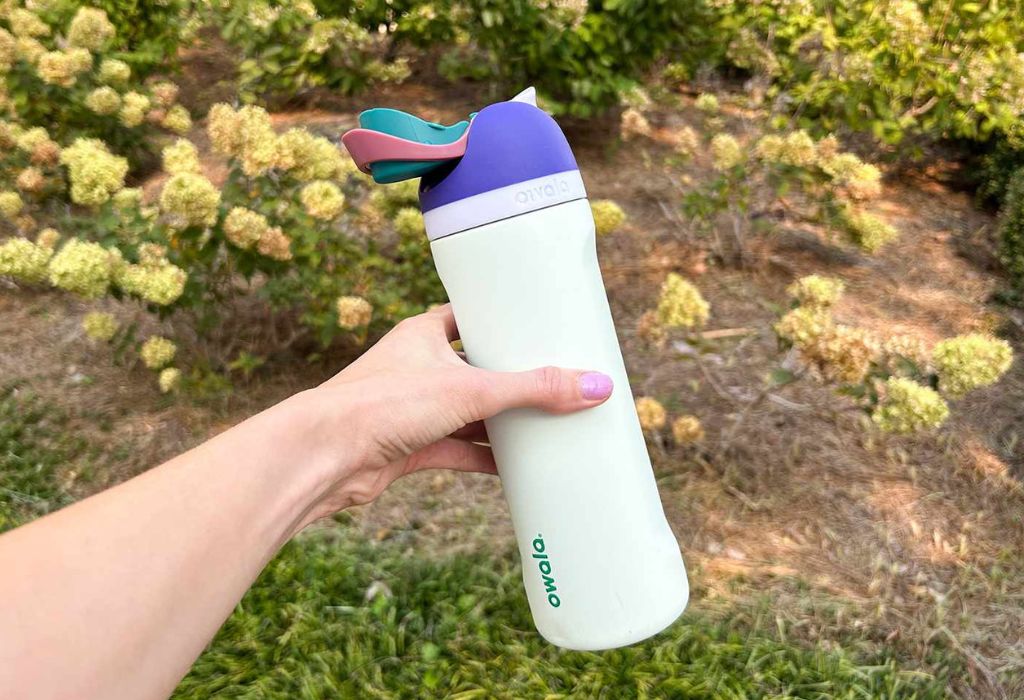
Cleaning methods impact both health and sustainability. Choosing gentle cycles and reusable cleaning agents keeps your Owala—and the planet—safe.
Dishwashers use more energy and water than quick handwashing, especially for one or two bottles. If you ride daily, rinsing after each use and handwashing weekly conserves resources.
Older bottles not labeled BPA-free may release micro-particles after repeated high-heat washes. Always check the underside for “BPA-Free” markings and replace older models if unclear.
Eco-friendly detergents with plant-based ingredients protect silicone seals and reduce wastewater contamination. Vinegar and baking soda remain the safest natural alternatives.
Remember that consistent cleaning is more important than the method. A lightly used, clean bottle is safer than an occasionally sanitized but residue-filled one.
Maintaining mindful hygiene keeps you hydrated safely and minimizes plastic waste.
When to Replace an Owala Bottle
Even premium bottles eventually wear out. Recognizing signs of fatigue helps you replace them before leaks or odor appear.
Replace your Owala if the silicone gasket feels loose or cracked. This seal is vital for preventing leaks, and once stretched, it no longer maintains pressure.
If stainless coatings chip or peel, retire the bottle immediately. Exposed metal can rust and affect both taste and appearance.
Persistent odors that remain after baking-soda or vinegar cleaning mean the interior has absorbed flavor oils. It’s safer to invest in a new one.
Inspect plastic bottles for cloudiness or small fractures. These micro-cracks trap bacteria and can’t be fully sanitized.
Generally, replace heavily used bottles every 18–24 months. Proper care may extend life to several years, but freshness and hygiene come first.
How long do Owala bottles last?
Typically 2–3 years with regular cleaning; lids may need earlier replacement if seals loosen.
Can I buy replacement straws or gaskets?
Yes, Owala sells replacement parts online and in retail outlets.
Do scratches affect hygiene?
Yes. Deep scratches trap bacteria and are difficult to clean effectively.
How do I fix a leaking lid?
Check the gasket alignment or order a replacement ring if it’s stretched.
What’s the safest long-term model for dishwashers?
The Tritan plastic series—durable, BPA-free, and fully top-rack safe.
Conclusion
So, can you put Owala water bottles in the dishwasher? Yes—but only certain ones and only with care. Tritan plastic Owala bottles and all lids or straws are top-rack dishwasher safe, while stainless-steel insulated models should always be handwashed.
Dishwasher cleaning is quick, but high heat can fade coatings, loosen seals, and shorten bottle life. For the best results, wash parts separately, skip heated drying, and let everything air-dry.
If you prefer long-term durability, handwashing is the gold standard. It preserves shine, prevents leaks, and keeps your drinks tasting pure. By following these guidelines, your Owala will stay as dependable and stylish as the day you bought it, ride after ride, sip after sip.
I’m Emma J. Caldwell, the founder, lead writer, and home-cooking enthusiast behind KitchenGuideCo.com. With a background in culinary arts and over a decade of cooking experience in both professional and personal kitchens, I created this platform to demystify recipes, offer smart kitchen gadget reviews, and guide readers through meal prep with confidence and clarity.

